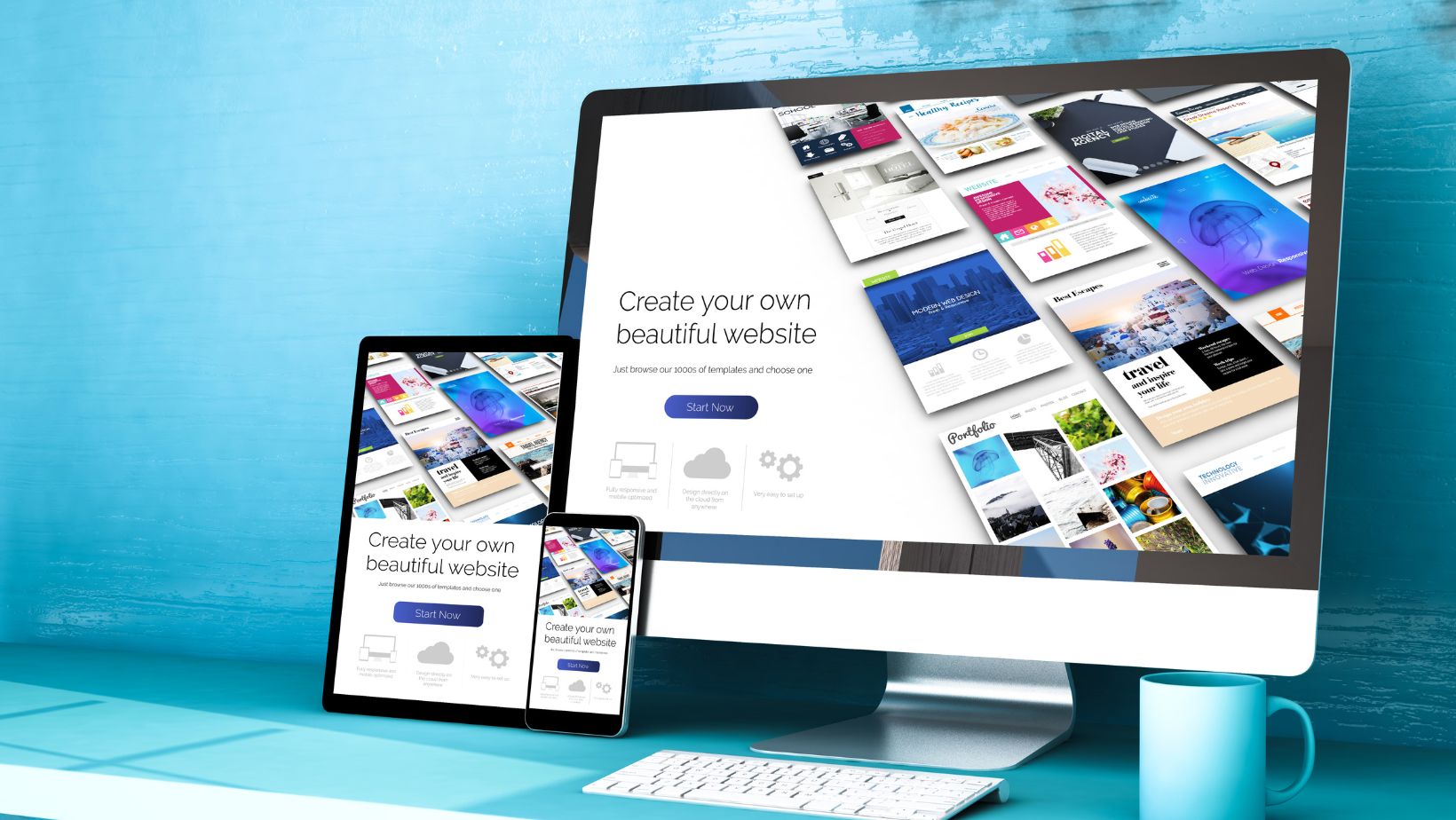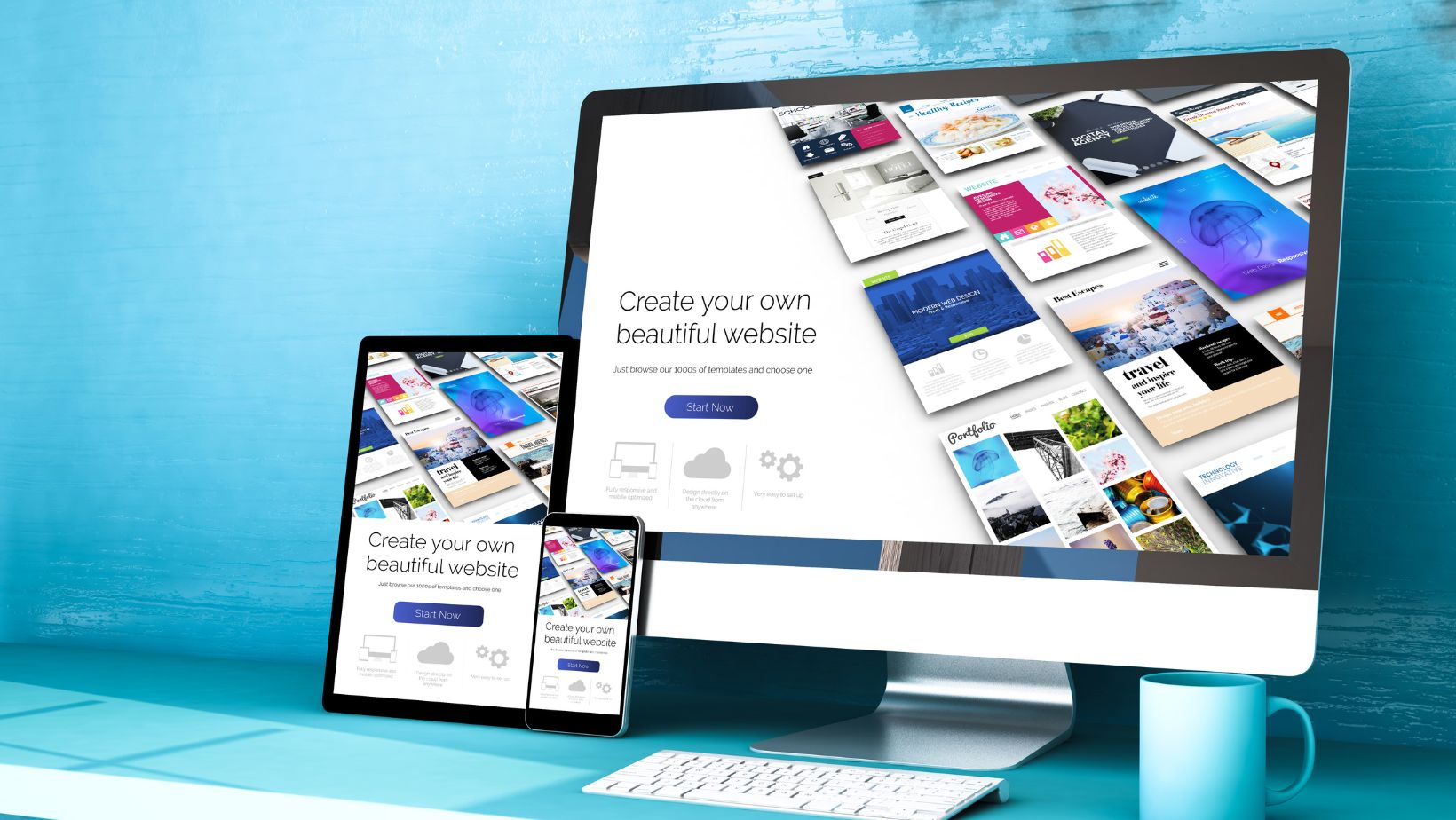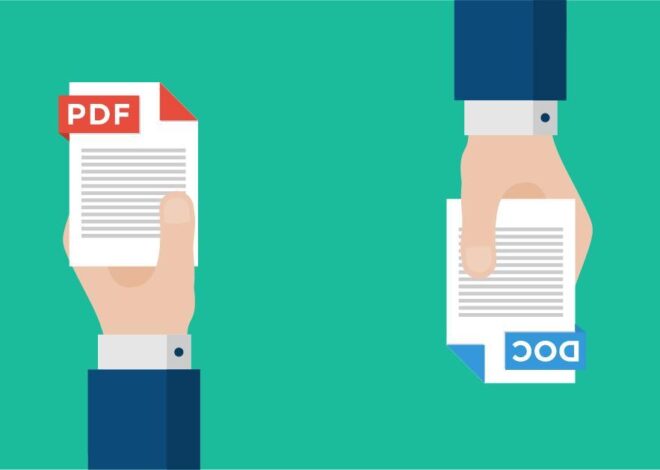
How to Design a Corporate Website That Enhances Your Brand Identity
In the modern digital era, a company’s website acts as the foundation of its online visibility. It is more than just an information portal; it’s a potent instrument to convey brand image and principles. A meticulously designed website can dramatically improve a brand’s reputation, underlining the importance for businesses to dedicate time and resources towards its careful design.
Building a corporate website that genuinely represents a brand’s identity goes beyond mere visual attractiveness. It demands a profound comprehension of the brand’s fundamental values, intended audience, and market standing. By incorporating design aspects that align with these factors, companies can establish a consistent and engaging online presence that appeals to visitors and enhances brand allegiance.
Understanding Brand Identity
Brand identity is made up of elements that delineate a business’s desired perception. This includes logos, design, colors, and messaging that set the brand apart in the marketplace. In the creation of a corporate website, these components must be maintained consistently to present a unified brand narrative.
Core Values and Vision
It is crucial to accurately portray core values. A company’s website should express its mission and vision clearly, aligning them with visual components and content. This enables users to rapidly comprehend what the brand represents.
Target Audience
The overall design of a website is shaped by the identification of the target audience. For instance, a business targeting professionals may opt for a sleek, modern look for their corporate website design. On the other hand, a company that focuses on a younger demographic might choose more vibrant and dynamic visuals. The content, tone, and layout are informed by understanding the audience, thereby improving user engagement.
Market Positioning
Positioning establishes a brand’s competitive standpoint. This should be mirrored on the website through thoughtful content and visuals. For instance, luxury brands frequently utilize top-notch images and minimalist design to express exclusivity and elegance. In the same way, a tech company might employ interactive features to highlight innovation.
Visual Elements
The brand’s identity should be reflected in visual aspects such as logos, color themes, and typography. Regular utilization of these elements strengthens recognition and fosters trust. Featuring a logo prominently on the homepage, combined with a consistent color scheme and uniform font application, projects a dependable and professional image.
Tone and Messaging
The content’s tone should be consistent with the overall brand messaging. For instance, a financial firm’s corporate website might employ formal, accurate language. Conversely, a fashion brand might use a more informal, conversational tone. Maintaining consistent messaging across all pages creates a cohesive brand voice.


Integrating brand identity into corporate website design development creates a cohesive and compelling online presence.
Key Elements of a Corporate Website
Several key elements need careful consideration in designing a corporate website that enhances brand identity.
Visual Design
The development of corporate website design is directly influenced by visual design. A professional and clean layout enhances credibility and mirrors the brand’s ethos. To strengthen identity, use brand colors and fonts consistently. Make sure logos are displayed prominently. Use high-quality images and graphics that represent the company’s values. The design should be responsive, ensuring a seamless experience across all devices.
Content Strategy
A robust content strategy guarantees that the information on the website aligns with the brand’s message. Produce clear and concise content that directly addresses the targeted audience. Utilize headlines to emphasize crucial information and facilitate easy navigation. Include SEO keywords to boost visibility. Provide frequent updates like blog posts, articles, and news to maintain the site’s dynamism and engagement. Adding customer testimonials and case studies lends credibility and fosters trust.
User Experience
Designing a corporate website requires a focus on user experience (UX). It’s important to have an intuitive navigation system that allows users to access information effortlessly. Enhancing user satisfaction and retention can be achieved through quick loading times. Clear calls-to-action should be used to direct visitors towards their intended actions. Incorporating contact forms, live chat, and other interactive features can boost user engagement. Conduct regular usability tests on the site and make required modifications to meet user requirements.
A corporate website can effectively enhance brand identity and provide a compelling online presence by focusing on key elements such as visual design, content strategy, and user experience.
Steps to Enhance Brand Identity
To effectively enhance brand identity, several steps are involved in designing a corporate website.
Consistent Branding
Make sure that every component on the website is in line with the overall brand image. Prominently display the company’s logo, slogan, and mission statement. Keep a consistent design throughout, from the headers and footers to the layout of various pages. This uniformity aids in providing a smooth user experience and strengthens the brand’s identity at all contact points.
Strategic Use of Colors and Typography
The perception of a brand is considerably influenced by colors and typography. Implement a color palette that mirrors the brand’s character and market status. Every color chosen should harmonize with the others for a unified aesthetic. Likewise, select fonts that align with the brand’s vibe, be it professional, informal, or inventive. The correct application of colors and fonts improves readability and draws visitor interest, resulting in a lasting user experience.
Incorporating Brand Stories
Utilize brand narratives to personify your company and foster a deeper connection with your audience. Featuring case studies, customer testimonials, and exclusive behind-the-scenes content can effectively highlight your brand’s journey, accomplishments, and principles. Genuine storytelling fosters trust and emotional engagement, enhancing your brand’s relatability and memorability.
Best Practices in Corporate Website Design
Adopting best practices guarantees that a corporate website effectively boosts brand identity. This segment explores the crucial components that lead to the successful design and development of a corporate website.
Responsive Design
Making sure a website is responsive implies that it appears and operates effectively on all devices. Whether using a desktop, tablet, or smartphone, users anticipate a smooth experience. Fluid grids, adaptable images, and media queries are components of responsive design. For example, a corporate website needs to adjust to various screen sizes while preserving its usability and aesthetics. Important content like contact information and calls-to-action should be readily available on all devices.
SEO Optimization
Optimizing a corporate website with SEO is essential for enhancing its visibility on search engines. This can be achieved by integrating pertinent keywords, improving meta tags, and ensuring high-quality backlinks for elevated rankings. Performance can be monitored using SEO tools such as Google Analytics and Search Console. A well-optimized website attracts more organic traffic, simplifying the process for potential clients to locate the brand. The use of structured data aids search engines in better understanding the site’s content, thereby boosting visibility and click-through rates.
Security and Compliance
A trustworthy corporate website is fundamentally built on security and compliance. SSL certificates, which guarantee data encryption, foster user confidence. Regularly conducted security audits can detect and alleviate potential risks. Adherence to regulations like GDPR or CCPA is crucial, particularly for companies that manage sensitive user information. Establishing transparency and trust involves displaying privacy policies and securing user consent for cookies and data gathering.


A corporate website can effectively boost brand identity and establish a dependable online presence by concentrating on these practices.
Case Studies
Studying successful case studies offers important understanding of how brand identity can be boosted through corporate website design. Businesses can pinpoint efficient tactics and steer clear of frequent mistakes by examining real-world instances.
Successful Examples
Apple Inc.
Apple’s corporate website splendidly showcases the brand’s identity through its minimalist design. It employs a neat layout, abundant white space, and sharp product images. The repeated use of the Apple logo, specific typography, and color scheme enhances brand recognition. Furthermore, its easy-to-use navigation allows visitors to find information with ease.
Nike
The website of Nike successfully combines striking visuals, captivating narratives, and interactive features to showcase its brand philosophy. High-impact images and videos, coupled with a unique black-and-white color palette, mirror Nike’s energetic and sporty image. The brand is further personified through customer testimonials and athlete case studies, nurturing robust emotional bonds.
Coca-Cola
The Coca-Cola website underscores the brand’s history and dedication to sustainability. The design integrates the iconic red-and-white color palette, the timeless logo, and captivating content about the brand’s past and sustainability efforts. The smooth user interface, along with well-positioned call-to-action buttons, boosts user interaction and commitment to the brand.
Lessons Learned
Consistency is Key
Successful brands highlight the significance of sustaining uniformity across all design components. To strengthen brand identity, colors, fonts, and logos must be consistently maintained throughout the website.
User Experience Matters
A website that is intuitive and user-friendly increases visitor engagement. To keep users on the site longer, navigation should be uncomplicated, featuring clear menus and speedy load times.
Storytelling Enhances Connection
Integrating brand narratives, client testimonials, and case studies can make the website more relatable. These components foster emotional connections and give a human touch to the brand.
Visual Appeal Attracts
User perception is greatly influenced by high-quality visuals. The attractiveness and engagement level of a website are enhanced by professional images and videos, paired with a unified color scheme.
SEO and Content Strategy
Content optimized for SEO guarantees increased visibility on search engines. Regular updates and the use of relevant keywords maintain the dynamism of the website and rank it higher. Content that is engaging and in line with the brand message enhances a robust online presence.
By learning from successful examples, companies can improve their use of corporate website design and development to strengthen their brand identity.
Conclusion
A well-crafted corporate website does more than just establish an online presence; it serves as a formidable tool for strengthening brand identity. When companies incorporate their fundamental values, uniform visual features, and tactical content, they can build an integrated and captivating online presence. Recognizing the target market and positioning in the industry guarantees the website connects with its visitors, promoting brand allegiance.
By integrating responsive design, SEO optimization, and strong security measures, the website’s credibility and reach are further reinforced. The value of consistency, user experience, and storytelling is highlighted by learning from successful brands such as Apple and Nike. In the end, a well-thought-out corporate website not only articulates a brand’s identity, but it also enhances its position in the market and fosters enduring relationships with its audience.
How to Design a Corporate Website That Enhances Your Brand Identity



